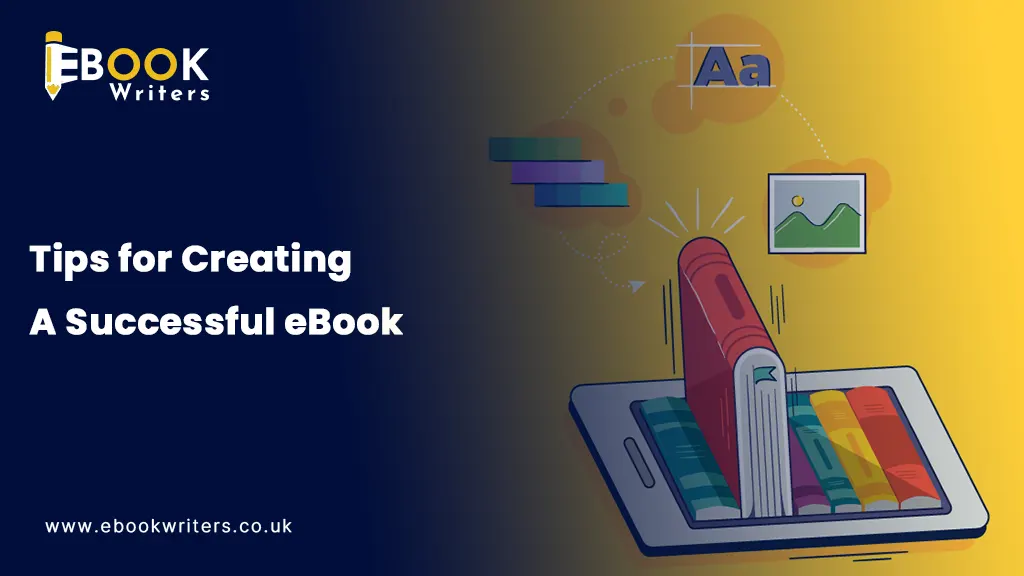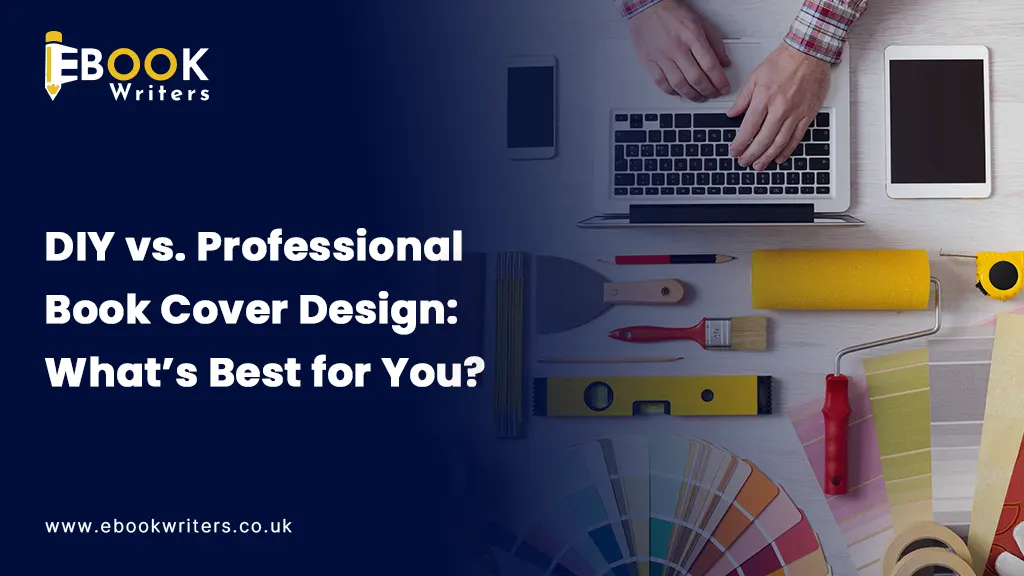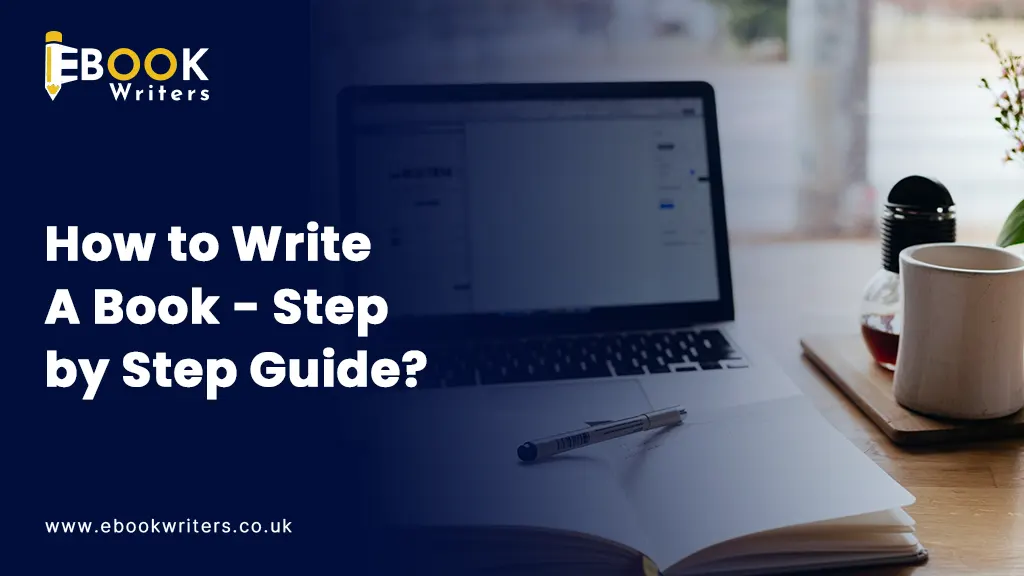A book cover is more than just the artistic wrapper for the pages inside. Instead, it is a potent marketing tool, a storytelling element in itself, or a part that can either attract your audience or displease them.
You must have heard the phrase 'Don’t judge a book by its cover.'
However, when it comes to picking up a book, this is absolutely not the case. When asked, 97% of the readers responded that they pick books because of their alluring book covers.
Honestly, I can vouch for that.
In the competitive book publishing landscape, books with visually appealing covers are bound to stand out. Be it the romance novella or the self-help book you are picking, one look at the front can make you determine its worth.
So, folks, it’s high time you pay attention to the covers too.
Whether you are an indie author venturing into self-publishing, designing book covers for your clients or collaborating with publishing companies, understanding the art of book cover design is essential.
The good thing is I am here to help. In this blog, we will unlock the secrets to brilliant book cover designing, including tips, common mistakes to avoid, essential elements and pleasing ideas.
So, grab your coffee and dive deep into our guide because it's going to be a long ride.
Why Book Cover Matters More Than Ever?
| Did you know? |
|---|
| Approximately 80% of readers admit to avoiding books due to poor book cover design. |
Approximately 80% of readers admit to avoiding books due to poor book cover design.
Well, there goes your chances of getting sales if your book covers are not appealing on the eyes. But have you ever thought why book covers matter more than ever?
In the age of digital landscapes like Amazon Kindle, Kobo and Apple Books, your book appears as a thumbnail on the crowded social media page. That means your cover isn’t only fighting in the physical space, but it is also in a digital competition.
Hence, if you want to make a good first impression, having a book cover that appeals to readers immediately is essential.
Furthermore, as I mentioned above, most purchasing decisions are based on the book cover. Therefore, putting in an effort while designing a book cover is essential.
Don’t believe me?
Here is a side-by-side comparison of bad and good book covers:
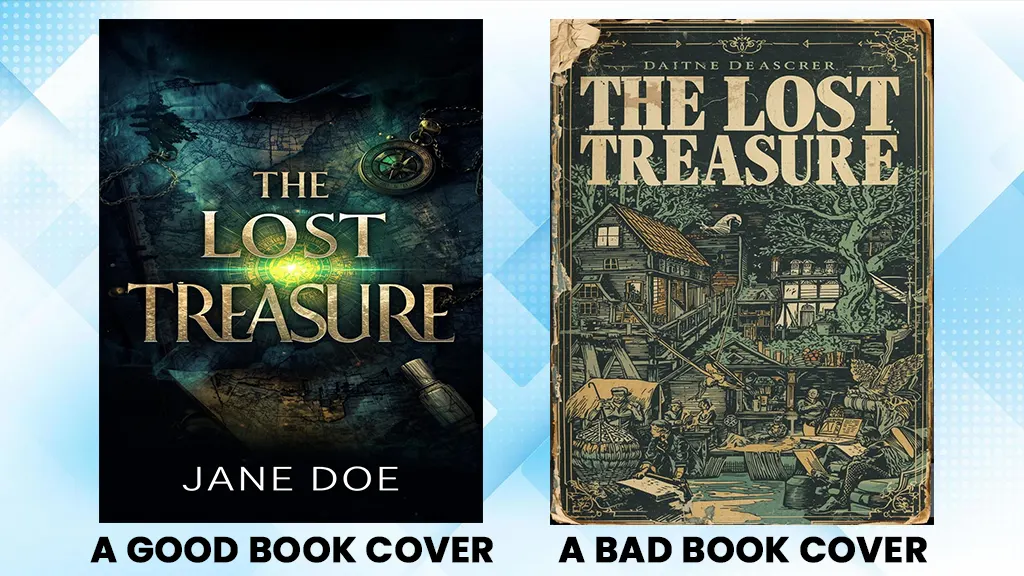
As you can see, there is a major difference between the book covers. While the
A good cover:
- Grabs attention instantly
- Conveys Genre and Tone at a Glance
- Sparks curiosity about the story.
- Builds trust in the quality of the writing inside.
In short, think of your cover as a salesperson, working around the clock to pitch to potential readers.
The Psychology Behind a Great Book Cover
A powerful cover speaks to your audience’s subconscious.
But have you wondered how?
Well, it leverages psychological triggers, such as colours, typography, and imagery, to convey your emotions, moods, and expectations.
From colour to typography, each factor plays a crucial role in this. Come on! Let’s learn more about this in detail:
Color Psychology
Colours are emotional. They signal to readers about what kind of book they are about to enter. From red to blue, each one has its own story.

For example:
- Red: Shows passion and urgency, perfect for thrillers, romance and action genres.
- Blue: Creates a sense of trust and calmness. It is often used in science fiction or professional nonfiction.
- Black/Dark Tones: They represent elegance, depth, and drama. Popular choice for mystery, horror, memoirs, and luxury-themed covers.
- Green: This symbolised harmony, peace and nature. It is often used for the wellness, fantasy or finance genre.
- Orange: Evoke enthusiasm, creativity and energy. It is perfect for young adult books.
- Yellow: It focuses on happiness and optimism. Furthermore, it is ideal for comedies and children’s books.
Therefore, when creating book covers, paying attention to different colours is essential.
Typography as Trendsetter
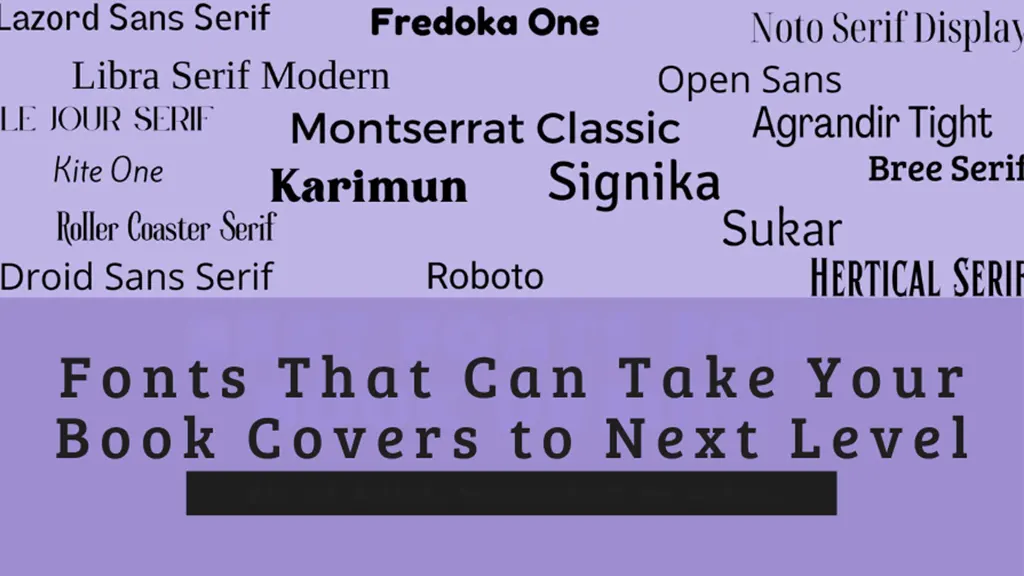
Typography is another crucial aspect when it comes to creating a book cover. Fonts are more than just the letters. Instead, they carry meaning. Here are the top fonts, categorised by genre.
- Literary Fiction & Memoirs: Classic Serif fonts like Garamond, Baskerville, or Janson are perfect. They create a sense of professionalism.
- Romance & Fantasy: Rounded Serif fonts, such as Merriweather or Lora, add a warmer feel.
- Children’s Book: Opt for readable sans-serif fonts with a playful feel. Furthermore, fonts like Century Gothic are perfect.
- Thriller & Suspense: A classic Serif font like Baskerville is the best option as it can create mystery and a timeless aesthetic.
- Non-fiction & Educational Books: Georgia (serif) or modern sans-serifs like Gotham are good for creating a trustworthy, clean aesthetic.
Visual Hierarchy
A well-designed cover guides the readers. From the title page to the subtitle, the author's name and a review help make it readable, even at thumbnail size.
Hence, understanding these psychological cues will help you communicate without words.
Get Premium, Unique and Appealing book cover designs at low rates and FAST.
Around 57% of the readers buy books based on their cover design. DON’T IGNORE IT. Get the appealing and attractive book cover designs NOW.
Yes, I want it!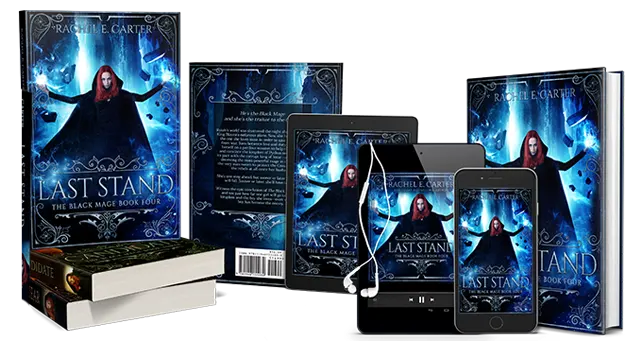
Essential Elements of A Book Cover
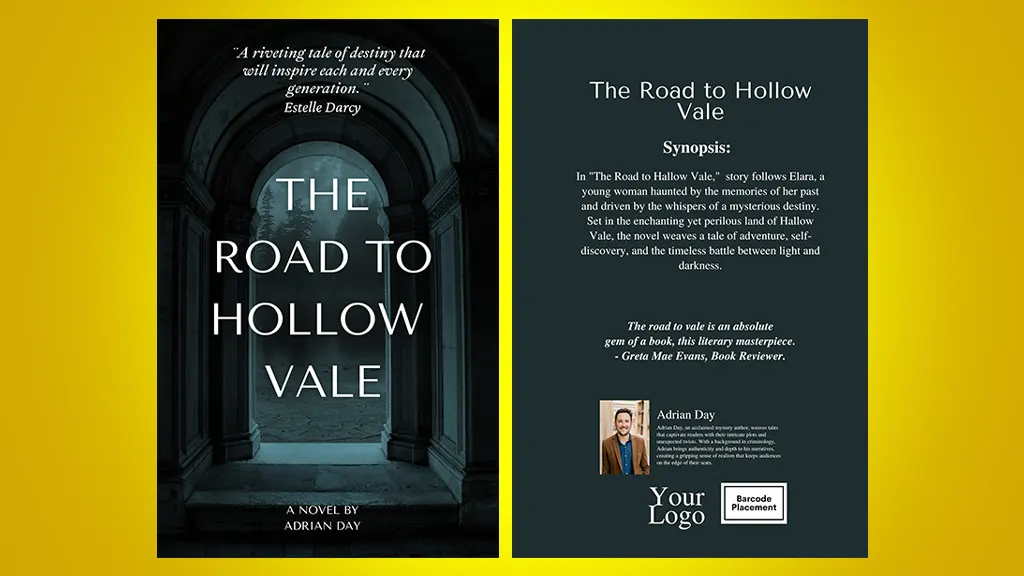
When making a book cover, there are some essential elements that you need to adhere to at all costs. They include:
- Front Cover: The face of your book where the main artwork, book’s name, subtitle and author’s name come.
- Spine: The spine is the part which readers see on the bookshelves. Therefore, the title and the author’s name must be readable even from afar.
- Back Cover: It includes a synopsis or a brief summary of the book, along with a small author bio, quotes from well-known critics and the ISBN, along with the barcode.
A professional book cover ensures that everything matches harmoniously. However, it can be a bit troublesome, especially if you have no clue what you are doing. Therefore, consider seeking guidance from Book Cover Design Services. They have years of experience and can help you craft a solid cover in no time.
Step-by-Step Guide to Creating a Book Cover
Now, let’s dive into what you guys have been waiting for: how to design a book cover?
Here is a step-by-step guide on what you need to do:
Step 1: Understand Your Genre and Audience
First things first, when creating a book cover, it's essential to understand your genre and target audience. Therefore, visualise what you are going to create. For example, the mystical readers will expect an enchanted forest, dragons or magical creatures on the front. Similarly, the suspense readers want is the dark, mysterious cover.
Moreover, ask yourself questions like:
- Who is my target reader?
- What emotion should my cover evoke?
- What’s the colour palette you should use?
- Which trends dominate my genre?
Once you have answers to all these questions, you can create an appealing book cover that can skyrocket your sales.
Step 2: Research Your Competitors
Are you completely clueless about what your book cover should look like?
No worries!
Take your time and research your competitors. It is not copying, it is merely taking inspiration. Look for the patterns they use in their covers, such as dark tones for thrillers and bold typography for nonfiction. You don’t have to follow through with them. However, it will help you generate ideas.
Step 3: Decide on Style and Layout
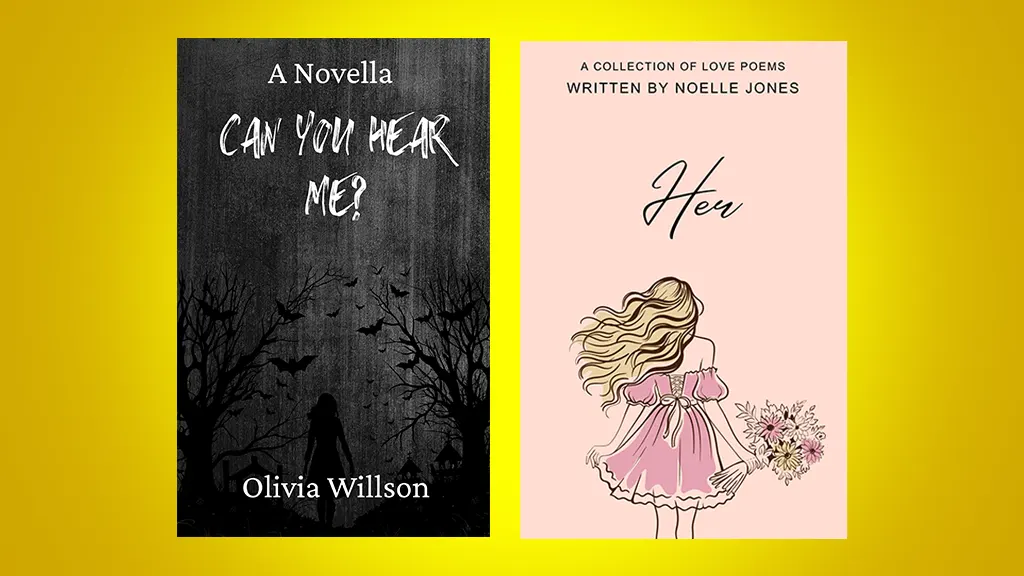
Here comes the most crucial step. You have to decide the style and layout. From abstracts to minimal approaches, illustrations or photography, you can pick the one that suits your genre and the ideas you’ve in your mind.
Furthermore, make sure it aligns with your book's tone. For example, an epic fantasy book might use intricate illustrations, whereas a poetry book might lean towards a cleaner design.
Step 4: Select a Colour Palette and Font
We’ve discussed the colour palette, psychology, and fonts. Therefore, ensure that you choose the right one. I would suggest sticking to 2-3 colours and 1-2 fonts to keep it simple. Furthermore, ensure it aligns with your genre.
Step 5: Create Drafts and Mockups
Once you’ve decided on the design, create variations and experiment with different themes. Furthermore, having the mockups will help you know what your book cover looks like in reality. Here are some tools you can consider using:
Moreover, if you wish to know more about tools and apps, consider reading my other blog: Best Tools and Software for Book Cover Design.
Step 6: Gather Feedback
If you are confused about the book cover you have designed, consider getting feedback. You can ask your beta readers for their thoughts. Also, you can even hire an eBook Maker in the UK. They have expert book designers who can help you polish your cover according to your requirements.
Step 7: Finalise and Format for Different Platforms
Phew! You are almost done. Just add the final touches to the book cover and ensure it is formatted for various platforms. Follow through their guidelines to ensure your cover is readable and pleasing.
Common Book Cover Mistakes to Avoid
Book cover designing is not as simple as it looks. In fact, when creating, there are some common cover mistakes that you need to avoid at all costs. They include:
- Overcrowded Designs: Avoid using too many elements, as it can overwhelm the readers and dilute the message.
- Poor Font Style: The simpler the font, the clearer the message is. Furthermore, decorative fonts are harder to read, especially if the font is short. So, avoid them.
- Ignoring the Thumbnail Factor: If your title or book cover layout isn’t clear in the thumbnail, it is time to rethink the design.
- Mismatch With Genre: A romance novel with an abstract pattern or a mystery novel with simple illustrations can be a problem. Therefore, make sure that the book cover aligns with the genre.
- Low-Quality Images: Pixelated or low-quality images can make your cover appear amateurish.
- A Lack of Back Cover: Not having a synopsis, author bio and review on the back cover is a mistake you should avoid.
A Pro Tip: If you wish to know more about how to create a compelling book cover design, consider reading my different blog: How to Design a Book Cover: The 10 Steps Guide
Save Time and get remarkable book cover designs by experts – Quick and Flawless.
Confused? Don’t know how to create attractive Book cover designs? Don’t worry! We helped 1000+ Authors get sensational results. Be the next one.
Place Order in Seconds
Genre-Specific Book Cover Ideas
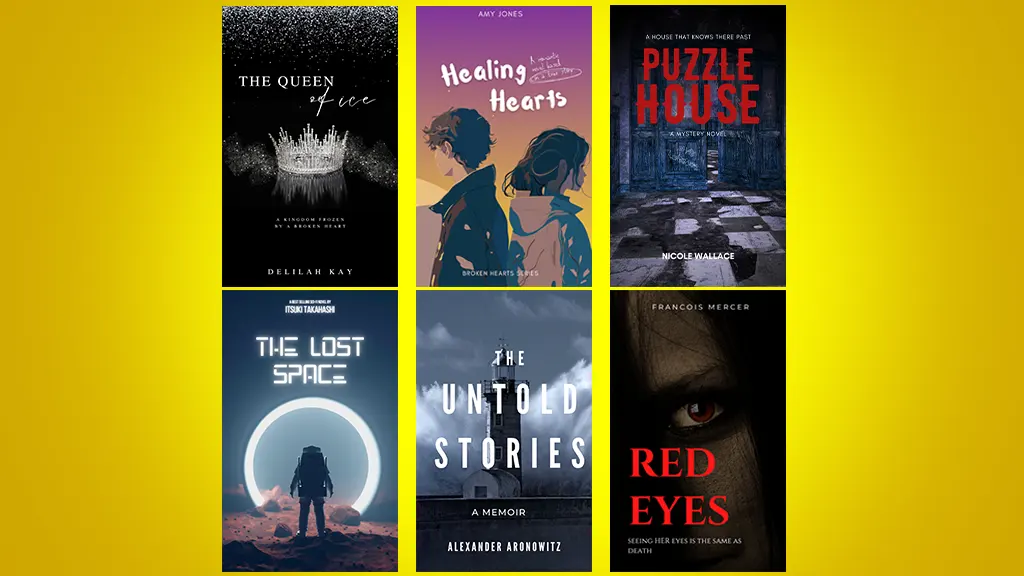
Every genre has its own unspoken rules when it comes to creating cool book covers. Well, don’t know what they are?
No worries, here is a cheat sheet that you can definitely steal. They include:
- Romance: Soft lighting, warm hues, elegant fonts, often featuring couples or subtle symbols like hearts or flowers.
- Thriller/Mystery: High contrast, darker tones, dramatic fonts, and intriguing imagery, like silhouettes or foggy streets.
- Fantasy: Detailed illustrations, magical symbols, ornate typography, and vibrant colours.
- Science Fiction: Futuristic fonts, metallic tones, and space-inspired imagery.
- Nonfiction: Minimalistic design with bold titles and clean layouts; the subtitle often plays a crucial role.
- Memoir: Focus on authenticity—personal photographs or symbolic objects often work well.
Brilliant Book Cover Ideas for Inspiration
If you are stuck creatively, here are some ideas to spark your inspiration. Furthermore, to know more about the book cover ideas, consider reading our blog: Trending Book Cover Design Styles for 2025. It covers all the trending designs. Now let’s discover more:
1. Minimalism Speaks Volume
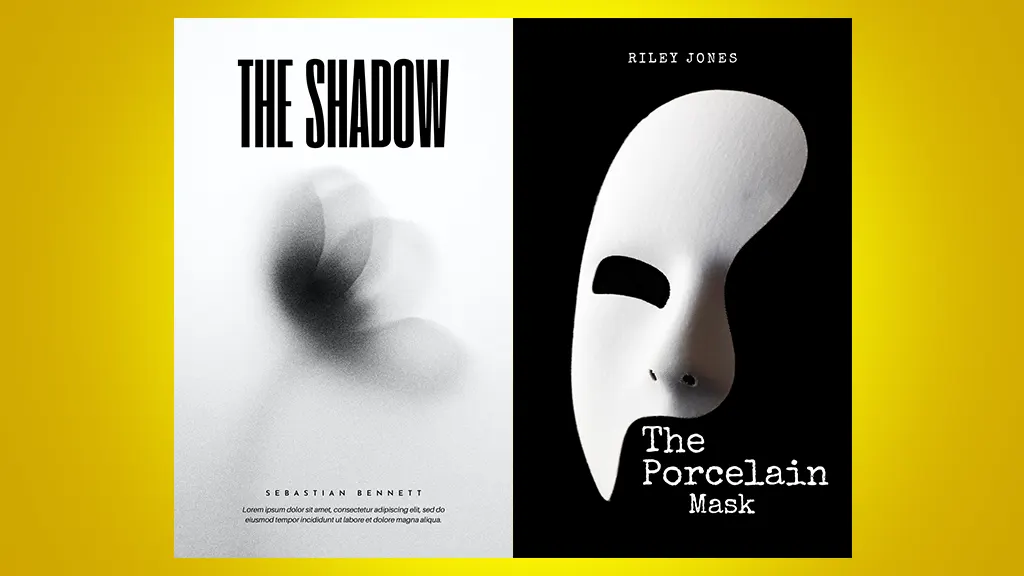
Well, when creating a mystery or thriller book cover, you can’t go wrong with minimalism. One lone feather or key with an eye is enough to intrigue your readers. Hence, I would suggest going for that one. Here are some examples for you:
2. Double Exposure Photography

Well, you can’t go wrong with photography. Layering images, such as a city skyline, within a character’s silhouette adds depth and intrigue. You can take inspiration from our designs.
3. Hand-Drawn Illustrations
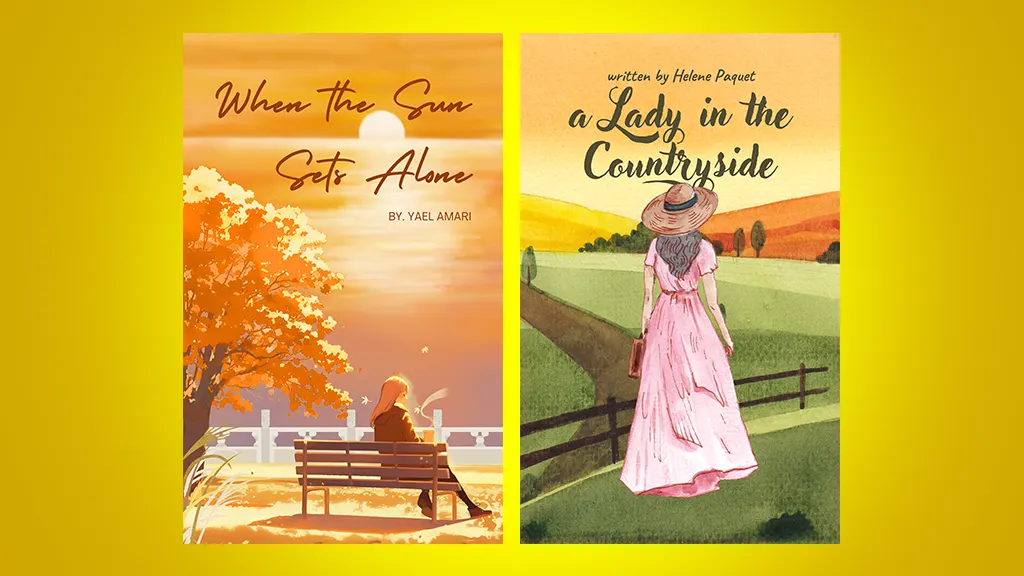
Especially popular in children’s literature and cosy mysteries, hand-drawn illustrations can take your book to the next level.
Why?
They add warmth and uniqueness. Here are some inspirations for you.
4. Typography-Driven Covers
Let bold, artistic typography be the main attraction.
Why?
Well, they are perfect for modern poetry and self-help.
5. Vintage or Retro Aesthetic
For historical fiction or memoirs, a vintage style helps readers connect with the era of the story. You can look for templates online or have them professionally done.
6. Colour Pop on Monochrome

A mostly black-and-white cover with one bold pop of colour draws immediate attention. So if your book is about mystery or suspense, go for it.
Self-Publishing Tips for the Authors
Before we end the guide, if you are a self-publisher on the lookout for tips and tricks, here is what you need to do:
- If a budget allows, consider hiring a professional for book editing and cover designs. No need to spend your time on this when you can receive them with one click.
- Moreover, if your book is part of a series, consider branding to ensure the font, colour, and typography are consistent throughout.
- Furthermore, A/B testing is the best option. Platforms like Facebook Ads and BookFunnels can help you find which cover is the best for you.
- Don’t skimp on the blurbs, as while the front cover steals the attention, the blurb at the back seals the deal, compelling readers to read it.
Wrap Up!
This concludes the guide. In a nutshell, the book cover is your ambassador, a handshake between your readers and you. Therefore, the more appealing the cover, the higher the chances of good sales.
Furthermore, by mastering the fundamentals of book cover writing, common design pitfalls, and exploring innovative ideas, you can craft visually appealing book covers that grab attention.
Also, remember that your book cover design doesn’t just tell the story; it ignites curiosity and invites readers in.
Whether you are a self-publishing author or designing a book cover for your clients, the key is to blend creativity with critical thinking. Take inspiration from the hot-selling authors, learn from your mistakes and don’t shy away from experimenting. Your audience must be at the forefront of your design.
Investing in designing the book yourself is the best decision, because long before your book starts selling, the cover tells the story.




